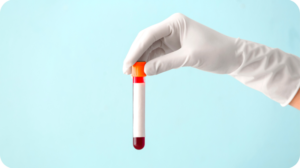Dry needling is an effective treatment for relieving musculoskeletal pain and restoring range of motion. Similar to acupuncture (but based in Western medical science rather than Eastern medical practice), the procedure is called “dry” because the needles are solid, in contrast to the hollow syringe needles used for injections. The needles are stuck into specific trigger points in the muscle to create a twitch response that essentially resets the muscle. The twitch loosens muscle tissue, unleashing an endorphin response and blood flow to the area. Both of those diminish local or radiated pain.

This technique is most often used to relieve pain and soreness from overuse or muscle damage to areas like the lower back. Dry needling has proven effective even for chronic pain. The technique should not, however, be confused with “trigger point injections” that are administered by doctors, and involve injecting medicine directly into muscle trigger points.
Dry needling is normally performed by trained and certified physical therapists. Those particular professionals are ideally equipped to integrate the procedure into a larger physical rehab plan, that may involve stretching, a specific exercise regimen, massage therapy, and other complementary treatments. The practitioner attempts to locate the exact trigger point and then sticks the needle down into the subcutaneous layer right above that point, or all the way into the muscle to directly contact the trigger point. On rare occasions, the practitioner may direct an electrical current through the needle while it is in the muscle, which further triggers the twitch response.
The Benefits
The principle underlying dry needling is that overworked or damaged muscles can become chronically inflamed, restricting healing blood flow to the muscle. When the needle goes into the trigger point, the muscle responds by loosening and allowing increased blood flow, which floods the tissue with oxygen. That, in turn, reduce inflammation and pain at the site or emanating from the area. Because it works with almost any large muscle, dry needling is used to treat many conditions. Some of the most common include:
- Migraines or other chronic tension headaches. Intense, repetitive headaches are often coupled with muscle spasms that create a feedback loop, making the headaches more intense. Dry needling is used to ease the spasms and reduce the severity of the headache.
- TMJ. Temporomandibular joint pain and movement limitations are both effectively addressed with dry needling. It can be a quick and comprehensive solution to the frustrating symptoms of this condition.
- Repetitive motion issues. Carpel tunnel syndrome is the most common of these, affecting people who work at a computer all day, or perform the same repetitive tasks for their work (such as prep chefs chopping vegetables day after day). Dry needling can be an alternative to surgery in some cases.
- Tendinitis. With this condition, the needles are often stuck into the tendon itself, slowing or stopping damage and degeneration. Dry needling in this case is usually combined with other forms of physical therapy.
- Joint problems. Accidents and sports injuries commonly affect joints, and the area will be treated with needles inserted—often only to the connective fascia level rather than the muscle—and moved slightly. As in other conditions, the technique is often used in conjunction with an exercise and stretching regimen.
Other conditions that can be effectively treated with this relatively simple procedure include chronic sleep-disturbing cramps, phantom limb pain, disk and spine problems, and pelvic pain.
Be aware that dry needling involves a modest amount of pain. There is a tactile prick when the needle is inserted, and the muscle twitch can be uncomfortable. If you have a fear of needles, this may not be the treatment for you. The area may be slightly tight and sore for a short time after the procedure. A warm compress and over-the-counter pain relievers may help. Learn more about dry needling and finding a practitioner certified in the technique on the American Physical Therapy Association’s website.







